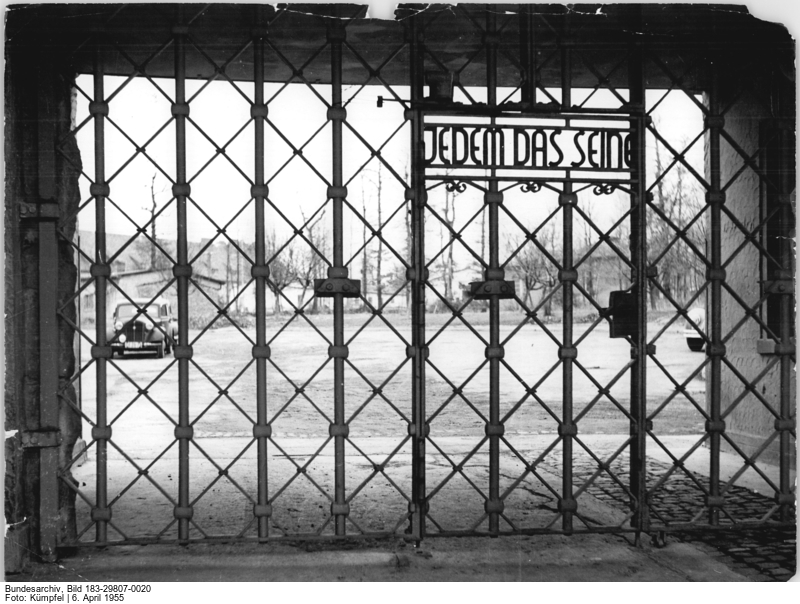Source

Source: Black and white photograph, April 6, 1955. Photographer: Kümpfel. Bundesarchiv, Bild 183-29807-0020.
Forced labor was a reality throughout the Nazi concentration camp system. The Nazi economy relied heavily on this system of slave labor, which functioned on an unprecedented scale. In addition to working in war production, camp inmates were forced to build elements of the camps themselves, constructing barracks, dining halls, crematoria, officers’ quarters, etc. Buchenwald was one of the largest concentration camps. It opened in 1937 and expanded to encompass a number of satellite camps for political prisoners, Jews, and “asocials,” as well as a separate crematorium. Built close to the city of Weimar, Buchenwald was situated within the very heart of Germany. One Buchenwald prisoner, Franz Ehrlich (1907–1984) was a German architect and Bauhaus-trained artist. Ehrlich was a communist, arrested in 1935 and sent to Buchenwald. He was forced to help design elements of the Buchenwald camp, including the commandant’s villa and the zoo (for guards and their families). He also designed the wrought iron gate at the main entrance to the camp, pictured here, which read “Jedem das Seine” (To Each His Own), which reminded prisoners that they would receive what they earned through productive work in the camp’s labor system. The sans serif font used in this sign reflects Ehrlich’s modernist influences and inclinations. It is notable that he remained loyal to modernism, despite the National Socalists’ official rejection of the style.

Source: Black and white photograph, April 6, 1955. Photographer: Kümpfel. Bundesarchiv, Bild 183-29807-0020.